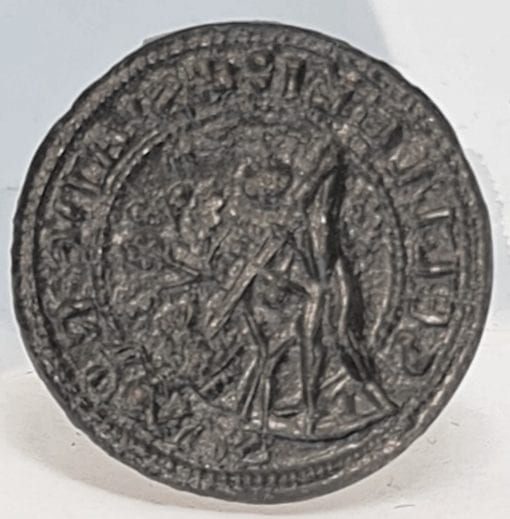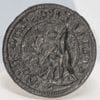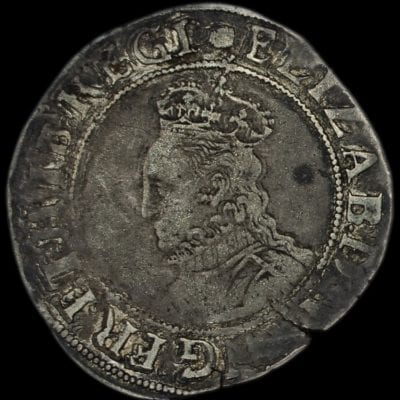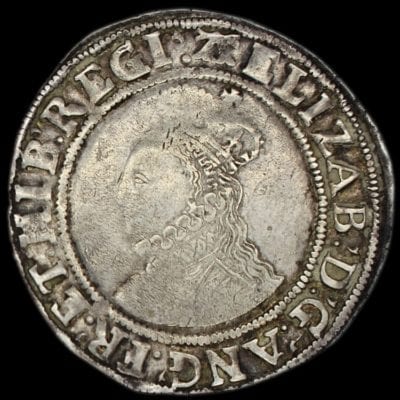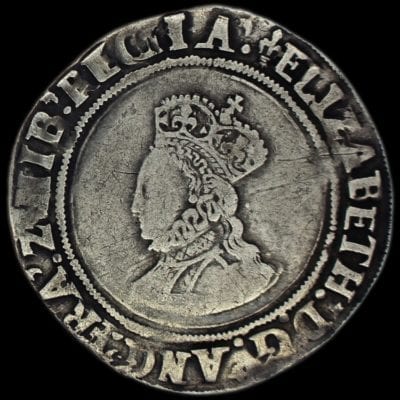Description
Taken from the Report from the Portable Antiquities Scheme ID Number WAW-2BADEE
A Medieval (late 13th to early 14th century) seal matrix: The copper alloy seal matrix is a flat-backed type which has an integral perforated lug positioned at the 12 o’clock position. Running from the lug to the opposite edge there is a slight triangular decorative platform. The underside has the legend and device which has been cast and engraved.
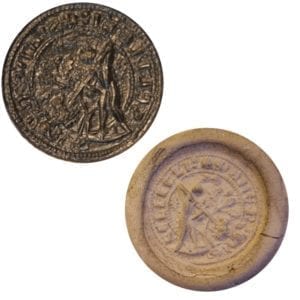
Matrix depicts a standing figure on the left turning to the right, with a long sword in his right hand stabbing a small lion
The device depicts a standing figure on the left of the matrix, turning to the right, with a long sword in his right hand drawn up and stabbing a small lion to the right of the matrix. Any detail of the figures clothing is not depicted or is not visible on the matrix and the impression. Above, and to the right of the figures head there is a motif which is possibly a feather or less likely a bird. Behind the figure there is a single oak leaf. In the background, behind the long sword, there is a simplified oak tree. The lion is out of proportion in size to the figure and appears to be the size of a dog, but the long tail with an expanded terminal and the muscular body suggests it is a lion. The device is within a beaded border, but the lion and feet of the standing figure do interrupt the legend between the O and V of ROVS. The legend reads + S’ ADE · ROVS SELL CL’IC (Seal of Adam Russell, Cleric or Clerk).The surface of the matrix has an incomplete dark grey green patina. The finder initially fully covered the matrix in renaissance wax, which has been since wiped off, but there are traces of white wax remaining within the impression and around the lug. This has subsequently been professionally removed.
The matrix measures 22.48mm diameter, 9.06mm thick at the leg and weighs 7.76g.
Based on the size of the matrix and the more elaborate device design the matrix dates to the late 13th to early 14th century. Seal matrices in the 13th century tend to be larger, measuring between 35 and 40 mm and 14th century matrices become smaller and more simplistic, and measuring 10 to 15mm (Harvey and McGuinness, 1996, pp.79-88).
(March 2016) Dr. Malcom Jones (pers comm) comments… ‘As the recorder notes, if the animal is a lion it’s not to scale, being very small, dog-size. It also has a prominent long tail. I suggest it is meant to be a fox, so in effect this is a rebus-seal, ME ‘russel, russell,’ etc. being a diminutive of ‘red’, and used as a proper name of the fox, for example Chaucer’s “Daun Russell” in his Nun’s Priest’s Tale.’ Jones (2020 pers comm) further adds that a seal in the NA [E 40/11960] depicting a fox running off with a bird in its jaws and slung over its shoulder is that of Sir James Russell, legend “s’ iacobi rvssel”. It is dated c. AD1273.
Inscription: + S’ ADE · ROVS SELL CL’IC

